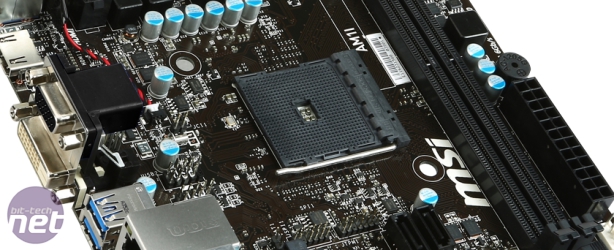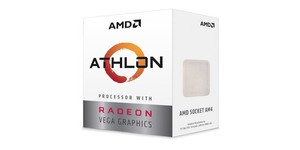
Performance Analysis
There are two stories to tell with Kabini and the first is that, as we suspected, it's not in all honesty a desktop CPU that many people, at least here on bit-tech, will be wanting for a main PC. At best, it managed to trade blows with Intel's mobile Core i3, the 3217U, but AMD's poor single threaded performance often comes into play too. However, its overall score in our media benchmarks of 680, while low, is a vast improvement on AMD's E-350, and better than the dual-core embedded Intel Celeron 847, that has done the rounds in various nettops. In fact, it's nearly twice as fast, and was more than twice as fast in the Handbrake video encoding test, with a score of 1,012 versus 472.In our GPU-acceleration benchmarks, it's clear that to a large degree, performance depends on what kind of optimisations are being used. When it comes to image editing and MuseMage's GPU acceleration, the Athlon 5350 comes out on top when the CPU is largely ignored. In BasemarkCL, though, which employs OpenCL and OpenGL, AMD is still dominant but the Athlon 5350 isn't quite as speedy against Intel Core i3-4330.
Click to enlarge
Finally, in our game test, the cut-back GPU featured in the Athlon 5350 along with single channel memory controller are likely the cause of the lackluster frame rates. However, it's worth remembering that the Intel Core i3-4330 is a £100 CPU, where as the Athlon 5350 costs just £40 and also matches the more expensive AMD A8-6500T too. Harking back to our comment that Kabini isn't a 1080p gaming APU, while we've used that resolution here, it's only to tie in with other results we've obtained and to provide a realistic view of what you can expect. In short, we suspect that most games will need a discrete GPU, even at 720p.
As a final test for HTPC owners out there, we also tried streaming some HD Netflix content and we're glad to report that playback was silky smooth. One of our main concerns with Kabini's predecessors was that the whole system seemed slow running on Windows. This simply wasn't the case here and our Kabini test system, paired with a modern SSD was as sprightly as an Intel Core-i5 system. Temperature-wise, using a heatsink little bigger than many chipset heatsinks we've seen, even under Prime95 and Unigine Valley, the HWMonitor-recorded CPU temperature never went above 38°C, with an ambient temperature of 23°C.
Conclusion
It might come as a surprise but performance-wise, Kabini isn't a disappointment. As we said earlier in the review, AMD has stated that it's not out there to compete with Kaveri or its range of CPUs; its more akin to improving the stakes at the lower end where Bobcat had previously fallen short. In this context it delivers in droves and is often more than twice as fast as the E-350, while matching Intel's Core i3 and Core i5-based NUCs and AMD's own AMD A8-6500T on occasions too - all of which are much more expensive. It does suffer in some situations but given the tasks for which it was intended, this isn't likely to be a problem.
So where is Kabini likely to end up? Considering it's currently one of, if not the cheapest options for a budget PC, AMD seems to be onto a winner in the office/low-end home PC market. A platform for performance enthusiasts it is not, although coupled with a discrete GPU, it's certainly capable of being much more potent in games. It's solid HTPC credentials get us most excited though; the stutter-free Netflix playback, lag-free experience on Windows, low cost and power draw means the Athlon 5350 is a great choice to sit under your TV. It's much cheaper than an Intel NUC too and you'll also have to visit online auction sites to be able build a home PC for less.

-
Speed29 / 50
-
Features14 / 15
-
Value34 / 35


MSI MPG Velox 100R Chassis Review
October 14 2021 | 15:04









Want to comment? Please log in.